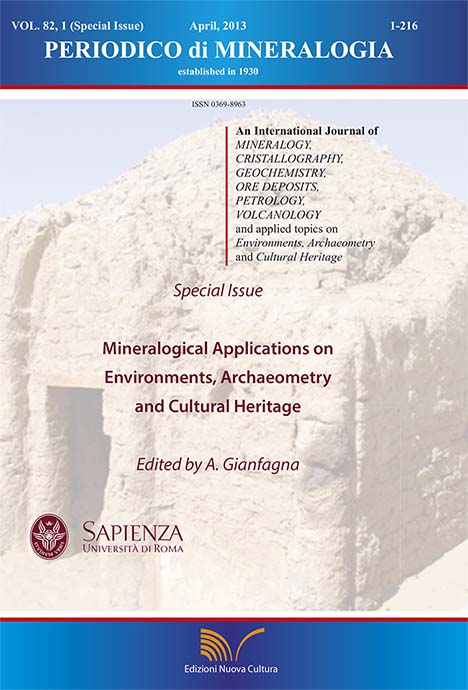Influence of soil mineralogy and chemistry on fungi and plants in a waste-rock dump from the Libiola mine (eastern Liguria, Italy)
DOI:
https://doi.org/10.2451/2013PM0009Keywords:
contaminated soils, abandoned sulphide-mines, waste-rock dump, fungi and plant metal accumulation, edaphic factors.Abstract
This work illustrates the results of a multidisciplinary study aimed at understanding the relations among the mineralogy and chemistry of a sulphidic waste rock-dumps from the Libiola mine (eastern Liguria, Itlay) and the metal uptake by fungi and plants spontaneously growing in a flat part at the bottom of this dump. The soil of the studied dump is characterized by severe edaphic conditions, mainly represented by high concentration of several toxic metals (Cr, Cu, Co, Ni, and Zn), low pHs, paucity of nutrients (in particular P, Ca, and K) and presence of superficial Fe-rich hardpans. Despite these harsh environmental conditions, the studied waste rock dump has been progressively colonized by several plants of Pinus pinaster. We found that this species is able to cope with some of these limiting factors by completely avoiding toxic metals from its tissues. The success of Pinus pinaster colonization is mainly due to the presence of Telephora terrestris and Scleroderma polyrrhizum, ectomycorrhizic with pine. These fungi are also able to actively absorb in their basidiomata most of the potential toxic elements occurring in the mine spoil. The recognized absorption sequence Cu > Zn > Cr > Ni > Co obtained for these macrofungi well matches with the sequences resulted from water leaching tests and EDTA extractions. The results obtained in our work highlighted the importance of multidisciplinary studies to clarify the influence of mineralogical and chemical composition on metal accumulation or resistance by native plants and mycobiota in abandoned mining sites. This may also have important implications for fungi and plants potential use in future forestation programs on metal contaminated sites.


